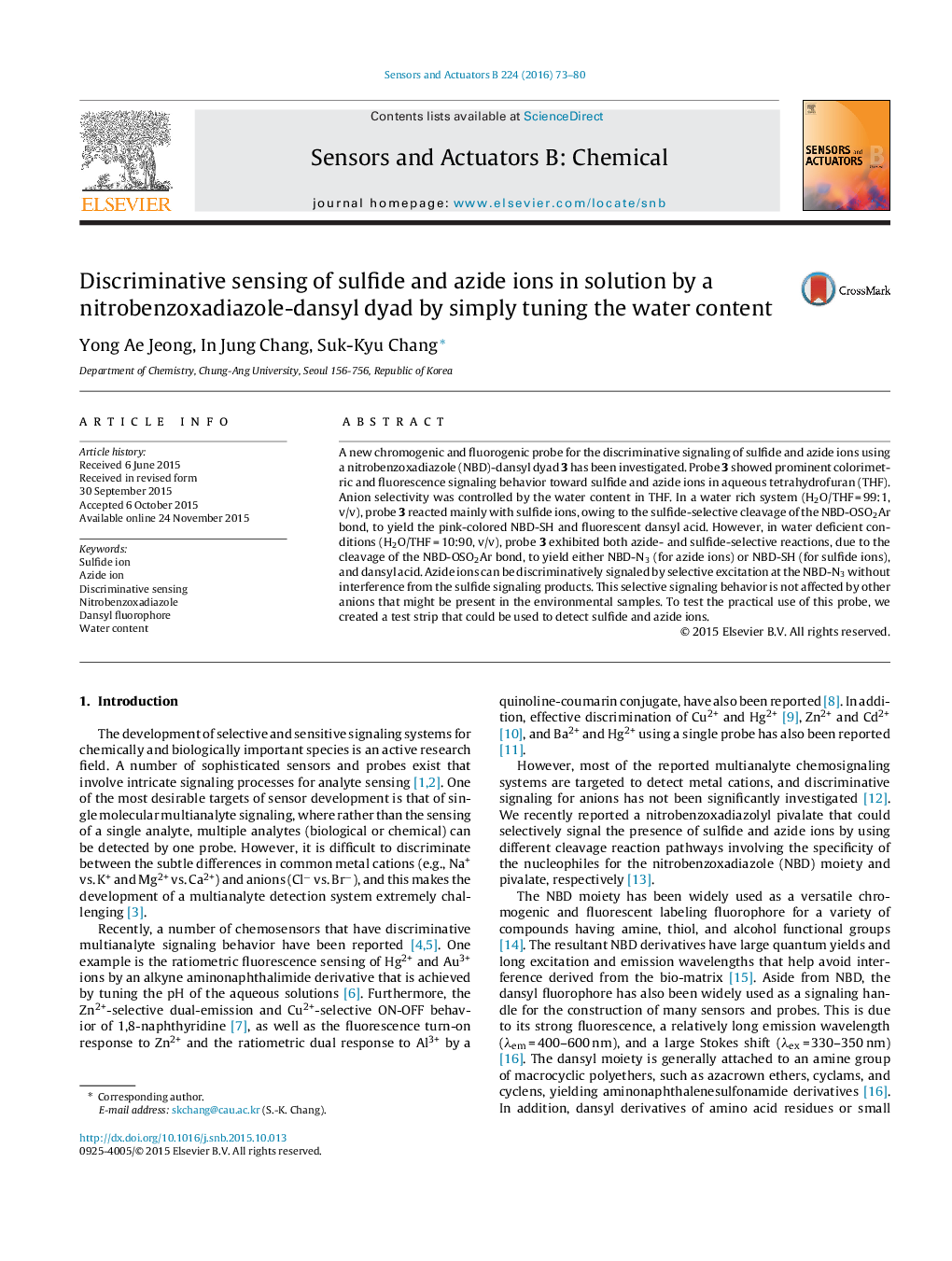| کد مقاله | کد نشریه | سال انتشار | مقاله انگلیسی | نسخه تمام متن |
|---|---|---|---|---|
| 750462 | 1462067 | 2016 | 8 صفحه PDF | دانلود رایگان |
A new chromogenic and fluorogenic probe for the discriminative signaling of sulfide and azide ions using a nitrobenzoxadiazole (NBD)-dansyl dyad 3 has been investigated. Probe 3 showed prominent colorimetric and fluorescence signaling behavior toward sulfide and azide ions in aqueous tetrahydrofuran (THF). Anion selectivity was controlled by the water content in THF. In a water rich system (H2O/THF = 99:1, v/v), probe 3 reacted mainly with sulfide ions, owing to the sulfide-selective cleavage of the NBD-OSO2Ar bond, to yield the pink-colored NBD-SH and fluorescent dansyl acid. However, in water deficient conditions (H2O/THF = 10:90, v/v), probe 3 exhibited both azide- and sulfide-selective reactions, due to the cleavage of the NBD-OSO2Ar bond, to yield either NBD-N3 (for azide ions) or NBD-SH (for sulfide ions), and dansyl acid. Azide ions can be discriminatively signaled by selective excitation at the NBD-N3 without interference from the sulfide signaling products. This selective signaling behavior is not affected by other anions that might be present in the environmental samples. To test the practical use of this probe, we created a test strip that could be used to detect sulfide and azide ions.
Figure optionsDownload as PowerPoint slide
Journal: Sensors and Actuators B: Chemical - Volume 224, 1 March 2016, Pages 73–80
